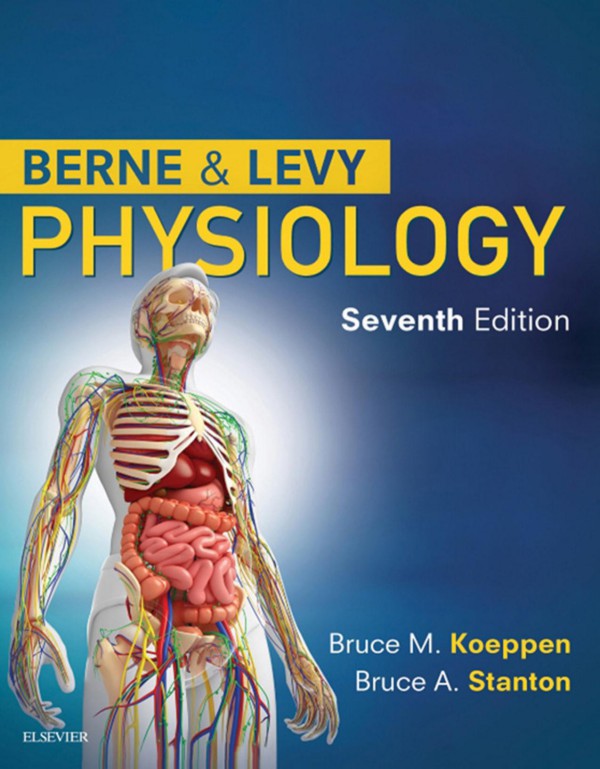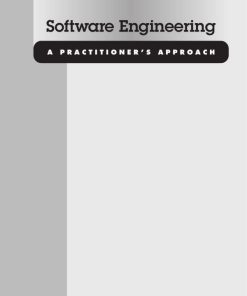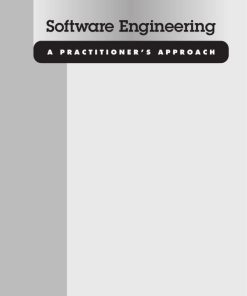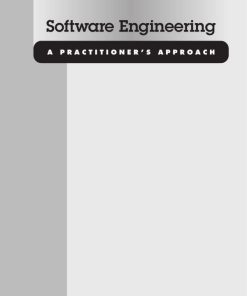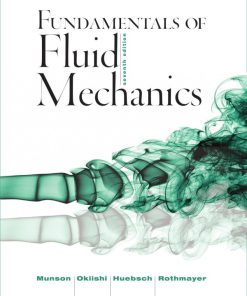Berne and Levy Physiology 7th Edition by Bruce M Koeppen, Bruce A Stanton ISBN 0323523412 9780323523417
$50.00 Original price was: $50.00.$25.00Current price is: $25.00.
Authors:Bruce M. Stanton Koeppen (bruce A.); Bruce A. Stanton , Series:Physiology [68] , Tags:Physiology , Author sort:Koeppen, Bruce M. Stanton & Stanton, Bruce A. , Ids:9788131252031 , Languages:Languages:eng , Published:Published:Nov 2017 , Publisher:Elsevier India , Comments:Comments:Berne & Levy Physiology, Seventh Edition (2018) 884pp. 978-0-323-39394-2
Berne and Levy Physiology 7th Edition by Bruce M Koeppen, Bruce A Stanton – Ebook PDF Instant Download/Delivery. 0323523412, 9780323523417
Full download Berne and Levy Physiology 7th Edition after payment
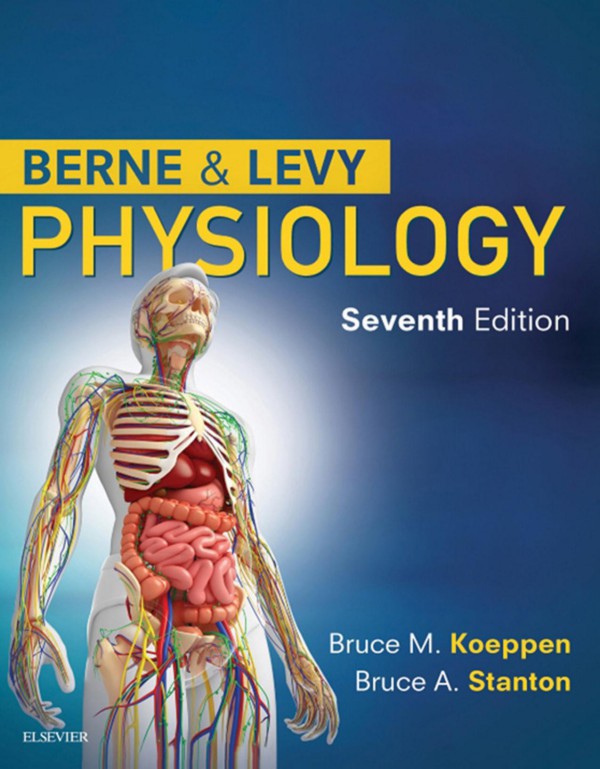
Product details:
ISBN 10: 0323523412
ISBN 13: 9780323523417
Author: Bruce M Koeppen, Bruce A Stanton
Berne & Levy Physiology has long been respected for its scientifically rigorous approach – one that leads to an in-depth understanding of the body’s dynamic processes. The long-awaited 7th Edition by Drs. Bruce M. Koeppen and Bruce A. Stanton, continues this tradition of excellence. With integrated coverage of biophysics and neurophysiology, key experimental observations and examples, and full-color design and artwork, this mid-size text is “just right” for a strong understanding of this complex field.
Berne and Levy Physiology 7th Table of contents:
Section 1: Cellular Physiology
1: Principles of Cell and Membrane Function
Overview of Eukaryotic Cells
Vesicular Transport
Electrochemical Gradient
Osmosis and Osmotic Pressure
Key Points
2: Homeostasis: Volume and Composition of Body Fluid Compartments
Concept of Steady-State Balance
Volumes and Composition of Body Fluid Compartments
Maintenance of Cellular Homeostasis
Principles of Epithelial Transport
Key Concepts
3: Signal Transduction, Membrane Receptors, Second Messengers, and Regulation of Gene Expression
Cell-to-Cell Communication
Receptors
Receptors and Signal Transduction Pathways
Regulation of Gene Expression by Signal Transduction Pathways
Key Points
Section 2: The Nervous System
4: The Nervous System: Introduction to Cells and Systems
Cellular Components of the Nervous System
The Peripheral Nervous System
The Central Nervous System
Nervous Tissue Reactions to Injury
Key Concepts
5: Generation and Conduction of Action Potentials
Membrane Potentials
Suprathreshold Response: The Action Potential
Conduction of Action Potentials
Key Concepts
6: Synaptic Transmission
Electrical Synapses
Chemical Synapses
Synaptic Integration
Modulation of Synaptic Activity
Neurotransmitters
Neurotransmitter Receptors
Key Concepts
7: The Somatosensory System
Subdivisions of the Somatosensory System
Discriminatory Touch and Proprioception
Thalamic and Cortical Somatosensory Areas
Pain and Temperature Sensation
Transduction in the Somatosensory System
Centrifugal Control of Somatosensation
Key Concepts
8: The Special Senses
The Visual System
The Auditory and Vestibular Systems
The Chemical Senses
Key Points
9: Organization of Motor Function
Principles of Spinal Cord Organization
Descending Motor Pathways
Brainstem Control of Posture and Movement
Motor Control by the Cerebral Cortex
Motor Control by the Cerebellum
Motor Control by the Basal Ganglia
Eye Movement
Key Points
10: Integrative Functions of the Nervous System
The Cerebral Cortex
Key Points
11: The Autonomic Nervous System and Its Central Control
Organization of the Autonomic Nervous System
Autonomic Ganglia
Neurotransmitters
Central Control of Autonomic Function
Key Points
Section 3: Muscle
12: Skeletal Muscle Physiology
Skeletal Muscle Physiology
Organization of Skeletal Muscle
Control of Skeletal Muscle Activity
Skeletal Muscle Types
Modulation of the Force of Contraction
Modulation of Force by Reflex Arcs
Skeletal Muscle Tone
Energy Sources During Contraction
Oxygen Debt
Fatigue
Growth and Development
Denervation, Reinnervation, and Cross-Innervation
Response to Exercise
Delayed-Onset Muscle Soreness
Biophysical Properties of Skeletal Muscle
Key Points
13: Cardiac Muscle
Basic Organization of Cardiac Muscle Cells
Control of Cardiac Muscle Activity
Regulation of the Force of Contraction
Cardiac Muscle Metabolism
Cardiac Muscle Hypertrophy
Key Points
14: Smooth Muscle
Overview of Smooth Muscle
Structure of Smooth Muscle Cells
Control of Smooth Muscle Activity
Innervation of Smooth Muscle
Regulation of Contraction
Regulation of Myoplasmic Calcium Concentration
Development and Hypertrophy
Synthetic and Secretory Functions
Biophysical Properties of Smooth Muscle
Key Concepts
Section 4: The Cardiovascular System
15: Overview of Circulation
The Heart
The Cardiovascular Circuit
Blood Vessels
Key Points
16: Elements of Cardiac Function
Electrical Properties of the Heart
Conduction in Cardiac Fibers
Cardiac Excitability
Effects of Cycle Length
Natural Excitation of the Heart and the Electrocardiogram
Electrocardiography
Arrhythmias
The Cardiac Pump
Key Points
17: Properties of the Vasculature
Hemodynamics
The Arterial System
The Venous System
Microcirculation and Lymphatic System
Coronary Circulation
Cutaneous Circulation
Skeletal Muscle Circulation
Cerebral Circulation
Intestinal Circulation
Hepatic Circulation
Fetal Circulation
Key Points
18: Regulation of the Heart and Vasculature
Regulation of Heart Rate and Myocardial Performance
Nervous Control of the Heart Rate
Regulation of Myocardial Performance
Regulation of the Peripheral Circulation
Key Points
19: Integrated Control of the Cardiovascular System
Regulation of Cardiac Output and Blood Pressure
Vascular Function Curve
Relating the Cardiac Function Curve to the Vascular Function Curve
A More Complete Theoretical Model: The Two-Pump System
Role of the Heart Rate in Control of Cardiac Output
Ancillary Factors That Affect the Venous System and Cardiac Output
Interplay of Central and Peripheral Factors in Control of the Circulation
Key Points
Section 5: The Respiratory System
20: Introduction to the Respiratory System
Lung Anatomical Structure/Function Relationships
Circulatory Systems in the Lung
Innervation
Lung Embryology, Development, Aging, and Repair
Key Points
21: Static Lung and Chest Wall Mechanics
Pressures in the Respiratory System
How a Pressure Gradient Is Created
Lung Volumes and Their Measurement
Measurement of Lung Volumes
Determinants of Lung Volume
Pressure-Volume Relationships
Lung Compliance
Surface Tension and Surfactant
Key Points
22: Dynamic Lung and Chest Wall Mechanics
Dynamic Lung Mechanics
Work of Breathing
Key Concepts
23: Ventilation, Perfusion, and Ventilation/Perfusion Relationships
Ventilation
Dead Space Ventilation: Anatomical and Physiological
Alveolar Ventilation
Pulmonary Vascular Resistance
Distribution of Pulmonary Blood Flow
Active Regulation of Blood Flow
Ventilation/Perfusion Relationships
Arterial Blood Hypoxemia, Hypoxia, and Hypercarbia
Low Ventilation/Perfusion
Alveolar Hypoventilation
Diffusion Abnormalities
Mechanisms of Hypercapnia
Effect of 100% Oxygen on Arterial Blood Gas Abnormalities
Regional Differences
Key Points
24: Oxygen and Carbon Dioxide Transport
Gas Diffusion
Oxygen Transport
Carbon Dioxide Transport
Regulation of Hydrogen Ion Concentration and Acid-Base Balance
Carbon Dioxide Dissociation Curve
Key Points
25: Control of Respiration
Ventilatory Control: An Overview
Response to Carbon Dioxide
Control of Ventilation: The Details
Exercise
Abnormalities in the Control of Breathing
Key Points
26: Nonphysiological Functions of the Lung: Host Defense and Metabolism
Host Defense
Mucosal Immune System: Adaptive and Innate Immunity
Epithelial Cells and Commensal Microbiota Protect the Lumen of the Airways
Clinical Manifestations Associated With Abnormalities in Mucosal Innate and Adaptive Immunity
Metabolic Functions of the Lung
Key Points
Section 6: Gastrointestinal Physiology
27: Functional Anatomy and General Principles of Regulation in the Gastrointestinal Tract
Functional Anatomy
Regulatory Mechanisms in the Gastrointestinal Tract
Response of the GI Tract to a Meal
Key Concepts
28: The Cephalic, Oral, and Esophageal Phases of the Integrated Response to a Meal
Cephalic and Oral Phases
Esophageal Phase
Key Concepts
29: The Gastric Phase of the Integrated Response to a Meal
Functional Anatomy of the Stomach
Gastric Secretion
Digestion in the Stomach
Gastrointestinal Motility
Gastric Motility
Key Concepts
30: The Small Intestinal Phase of the Integrated Response to a Meal
Gastric Emptying in the Small Intestinal Phase
Carbohydrate Assimilation
Protein Assimilation
Uptake of Peptides and Amino Acids
Lipid Assimilation
Water and Electrolyte Secretion and Absorption
Absorption of Minerals and Water-Soluble Vitamins
Motor Patterns of the Small Intestine
Key Concepts
31: The Colonic Phase of the Integrated Response to a Meal
Overview of the Large Intestine
Key Concepts
32: Transport and Metabolic Functions of the Liver
Overview of the Liver and Its Functions
Structural Features of the Liver and Biliary System
Bile Formation and Secretion
Ammonia Handling by the Liver
Clinical Assessment of Liver Function
Key Concepts
Section 7: The Renal System
33: Elements of Renal Function
Overview of Renal Function
Functional Anatomy of the Kidneys
Assessment of Renal Function
Glomerular Filtration
Renal Blood Flow
Regulation of Renal Blood Flow and Glomerular Filtration Rate
Key Concepts
34: Solute and Water Transport Along the Nephron: Tubular Function
Solute and Water Reabsorption Along the Nephron
Regulation of NaCl and Water Reabsorption
Key Concepts
35: Control of Body Fluid Osmolality and Volume
Control of Body Fluid Osmolality: Urine Concentration and Dilution
Control of Extracellular Fluid Volume and Regulation of Renal NaCl Excretion
Key Concepts
36: Potassium, Calcium, and Phosphate Homeostasis
K+ Homeostasis
Regulation of Plasma [K+]Alterations in Plasma [K+]K+ Excretion by the Kidneys
Cellular Mechanism of K+ Secretion by Principal Cells and Intercalated Cells
Regulation of K+ Secretion by the Distal Tubule and Collecting Duct
Factors That Perturb K+ Excretion
Overview of Calcium and Inorganic Phosphate Homeostasis
Integrative Review of Parathyroid Hormone and Calcitriol on Ca++ and Pi Homeostasis
Key Concepts
37: Role of the Kidneys in the Regulation of Acid-Base Balance
The HCO3 − Buffer System
Overview of Acid-Base Balance
Net Acid Excretion by the Kidneys
Response to Acid-Base Disorders
Simple Acid-Base Disorders
Key Concepts
Section 8: The Endocrine and Reproductive Systems
38: Introduction to the Endocrine System
Configuration of Feedback Loops Within the Endocrine System
Chemical Nature of Hormones
Transport of Hormones in the Circulation
Cellular Responses to Hormones
Key Points
39: Hormonal Regulation of Energy Metabolism
Continual Energy Supply and Demand: The Challenge
Integrated Overview of Energy Metabolism
Pancreatic Hormones Involved in Metabolic Homeostasis During Different Metabolic Phases
Hormonal Regulation of Specific Metabolic Reactions and Pathways
Leptin and Energy Balance
Key Concepts
40: Hormonal Regulation of Calcium and Phosphate Metabolism
Crucial Roles of Calcium and Phosphate in Cellular Physiology
Physiological Regulation of Calcium and Phosphate: Parathyroid Hormone and 1,25-Dihydroxyvitamin D
Regulation of [Ca++] and [Pi] by Small Intestine and Bone
Physiology of Bone
Integrated Physiological Regulation of Ca++/Pi Metabolism
Key Concepts
41: The Hypothalamus and Pituitary Gland
Anatomy
The Neurohypophysis
The Adenohypophysis
Key Concepts
42: The Thyroid Gland
Anatomy and Histology of the Thyroid Gland
Production of Thyroid Hormones
Transport and Metabolism of Thyroid Hormones
Regulation of Thyroid Function
Physiological Effects of Thyroid Hormone
Key Concepts
43: The Adrenal Gland
Anatomy
Adrenal Medulla
Adrenal Cortex
Key Concepts
44: The Male and Female Reproductive Systems
The Male Reproductive System
The Female Reproductive System
People also search for Berne and Levy Physiology 7th:
berne & levy physiology
berne & levy physiology 8th edition
berne & levy physiology eighth edition
berne & levy physiology latest edition
berne & levy physiology 6th edition

